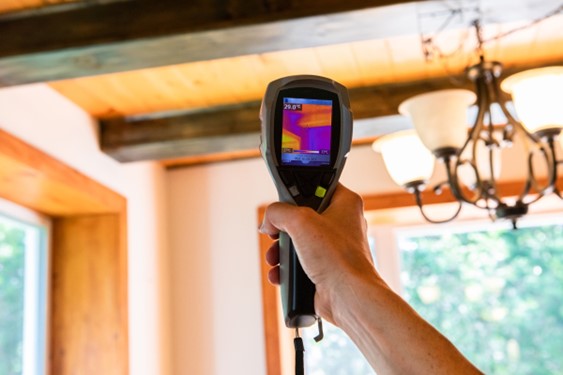
The quest for healthier living and working environments is a multifaceted challenge that encompasses various factors, not the least of which is mold. With the profound impact it has on indoor air quality, mold influences not only the structural integrity of buildings, but more importantly, the health of occupants. This detailed exploration looks into how mold interacts with indoor environments and the proactive measures that can be implemented to mitigate its growth, drawing on the expertise of Antonio (Tony) Madureira and his team at AV Builder Corp. Under Tony’s leadership, AV Builder Corp has evolved from a modest startup into a major general contracting firm, boasting over 40 employees in California. Their insights into maintaining mold-free and healthy indoor environments are invaluable.
The Nature of Mold and Its Impact on Health
Capable of being found almost everywhere, mold is a fungus consisting of countless small organisms. It can be black, white, orange, green, or purple. In the outdoor environment, mold plays a crucial role in nature by breaking down dead leaves, plants, and trees. However, indoors, mold growth must be avoided because it can be harmful to health and property. AV Builder Corp, under Tony Madureira’s guidance, emphasizes the importance of understanding mold to effectively combat its adverse effects on indoor air quality.
When mold spores land on a damp spot indoors, they may begin growing and digesting whatever they are growing on in order to survive. This can damage the surface they grow on, exacerbate wear and tear, and lead to significant property damage over time. More concerning is mold’s impact on indoor air quality and health. Mold spores and fragments can become airborne and inhaled, which may lead to a range of health issues. Those with allergies, asthma, or immune suppression are at a higher risk. Symptoms of mold exposure include nasal stuffiness, throat irritation, coughing or wheezing, eye irritation, or, in some cases, skin irritation. People with mold allergies may have more severe reactions, and immune-compromised individuals can get serious lung infections when exposed to mold.
Understanding the Drivers of Indoor Mold Growth
The primary driver of mold growth is moisture. Mold cannot grow without water or moisture; thus, controlling indoor humidity levels, fixing leaks, and ensuring proper ventilation is key to preventing mold. Leaks from pipes or roofs, flooding, condensation (often seen on windows, piping, roof, or floors), or any area that remains damp can serve as potential breeding grounds for mold.
Building materials provide suitable nutrients that encourage mold to grow. Wet cellulose materials, including paper and paper products, cardboard, ceiling tiles, wood, and wood products, are particularly conducive for the growth of some molds. Other materials, such as dust, paints, wallpaper, insulation materials, drywall, carpet, fabric, and upholstery, commonly support mold growth when they are wet.
Strategies to Combat Mold and Enhance Indoor Air Quality
Antonio Madureira understands that improving indoor air quality by combating mold requires a multipronged approach. Here are detailed strategies to prevent mold growth and safeguard your living spaces:
• Control Humidity and Moisture Levels
Maintain indoor humidity at 30-50% to inhibit mold growth. Use dehumidifiers and air conditioners to manage moisture levels, especially in humid climates or during rainy seasons. Ensure that bathrooms, kitchens, and laundry rooms are well-ventilated to expel moisture to the outside. Be sure to vent appliances that produce moisture, like clothes dryers and stoves, directly outdoors.
• Enhance Ventilation
Poor ventilation can lead to increased humidity levels and condensation, creating ideal conditions for mold growth. Regularly opening windows and doors, using exhaust fans, and ensuring that ventilation systems are working effectively can help reduce moisture. In colder climates, consider increasing ventilation when using humidifiers indoors to prevent condensation on windows.
• Repair Leaks Promptly
Water leaks provide a constant moisture source for mold. Inspect your property regularly for signs of leaks and address them immediately. Pay close attention to water pipes, roofs, windows, and foundations. Ensure gutters and downspouts are clean and directing water away from your building to prevent water infiltration.
• Dry Wet Areas Immediately
Mold can grow within 24-48 hours once exposed to moisture. Act swiftly to dry any wet areas, whether from leaks, spills, floods, or condensation. Remove and replace any water-damaged carpets, upholstery, and bedding, as these can become long-term mold sources.
• Clean and Dust Regularly
Regular cleaning helps to remove potential mold food sources such as dust and organic debris. Use mold-killing products in bathrooms, kitchens, and other areas that are prone to mold. Ensure fabrics, rugs, and carpets are kept clean and dry.
• Use Mold-Resistant Products
When renovating or building, opt for mold-resistant drywall, paints, and building materials. These products are specially designed to resist moisture and can be particularly effective in damp areas of your home. Antonio Madureira and his team at AV Builder Corp advocate for the use of these products, especially in moisture-prone areas like bathrooms and basements.
• Inspect and Maintain HVAC Systems
HVAC systems can harbor mold and distribute spores throughout a building. Regular inspections, cleaning of ductwork, and replacing filters as recommended can prevent mold growth and improve indoor air quality.
• Educate on Proper Plant Care
Indoor plants improve air quality, but overwatering can increase indoor humidity levels. AV Builder Corp suggests ensuring adequate drainage and proper watering techniques to prevent excess moisture conducive to mold growth.
Addressing mold and its impact on indoor air quality is a critical aspect of creating healthful living spaces. With insights from Tony Madureira and AV Builder Corp, this guide underscores the importance of moisture control, proper ventilation, and regular maintenance as key strategies in the fight against mold. Their expertise, gained from transforming AV Builder Corp from a small operation into a leading general contracting firm, provides a foundational approach to maintaining mold-free, healthy indoor environments. By adopting these measures, we can protect both our spaces and our health from the detrimental effects of mold.


